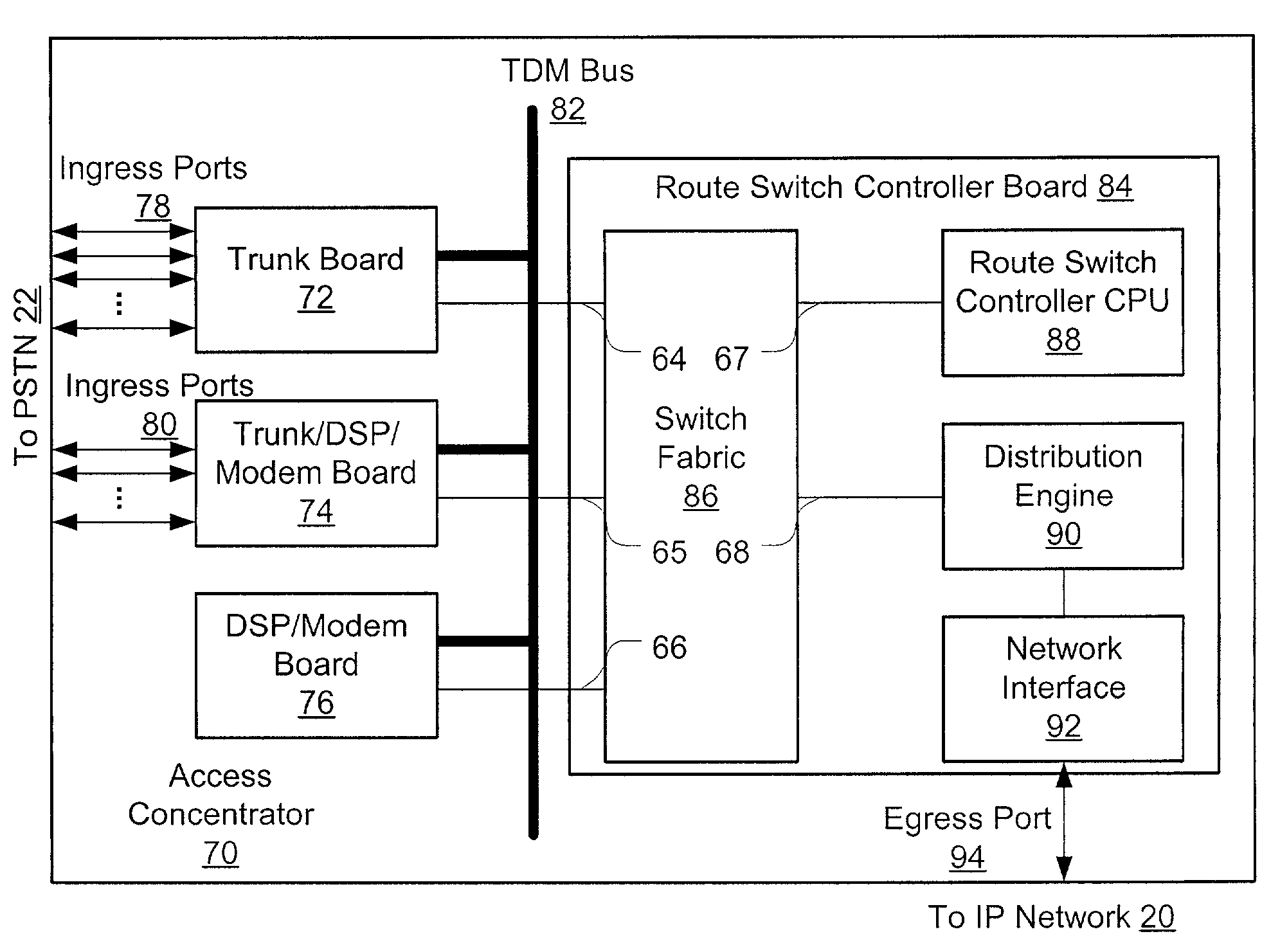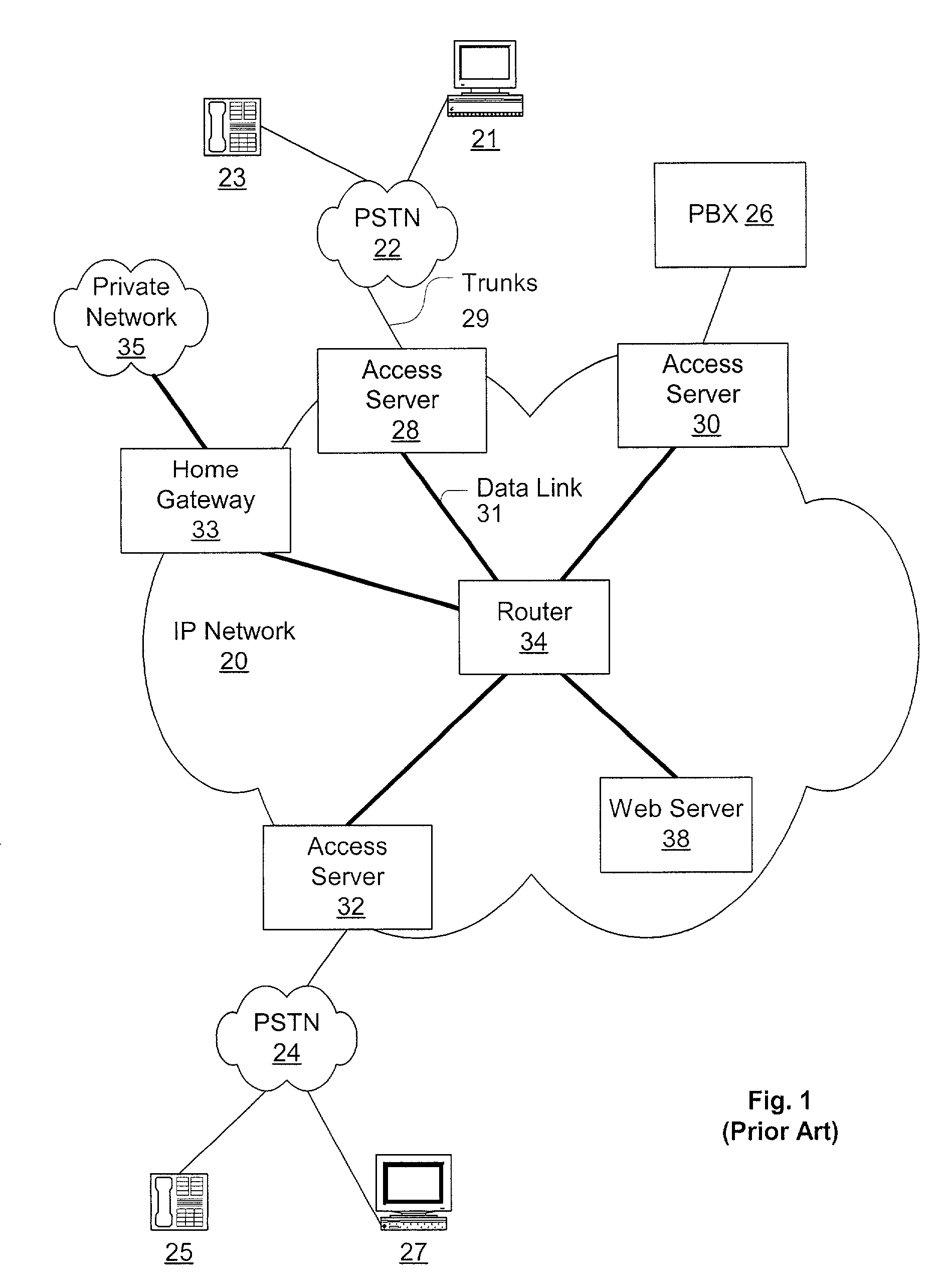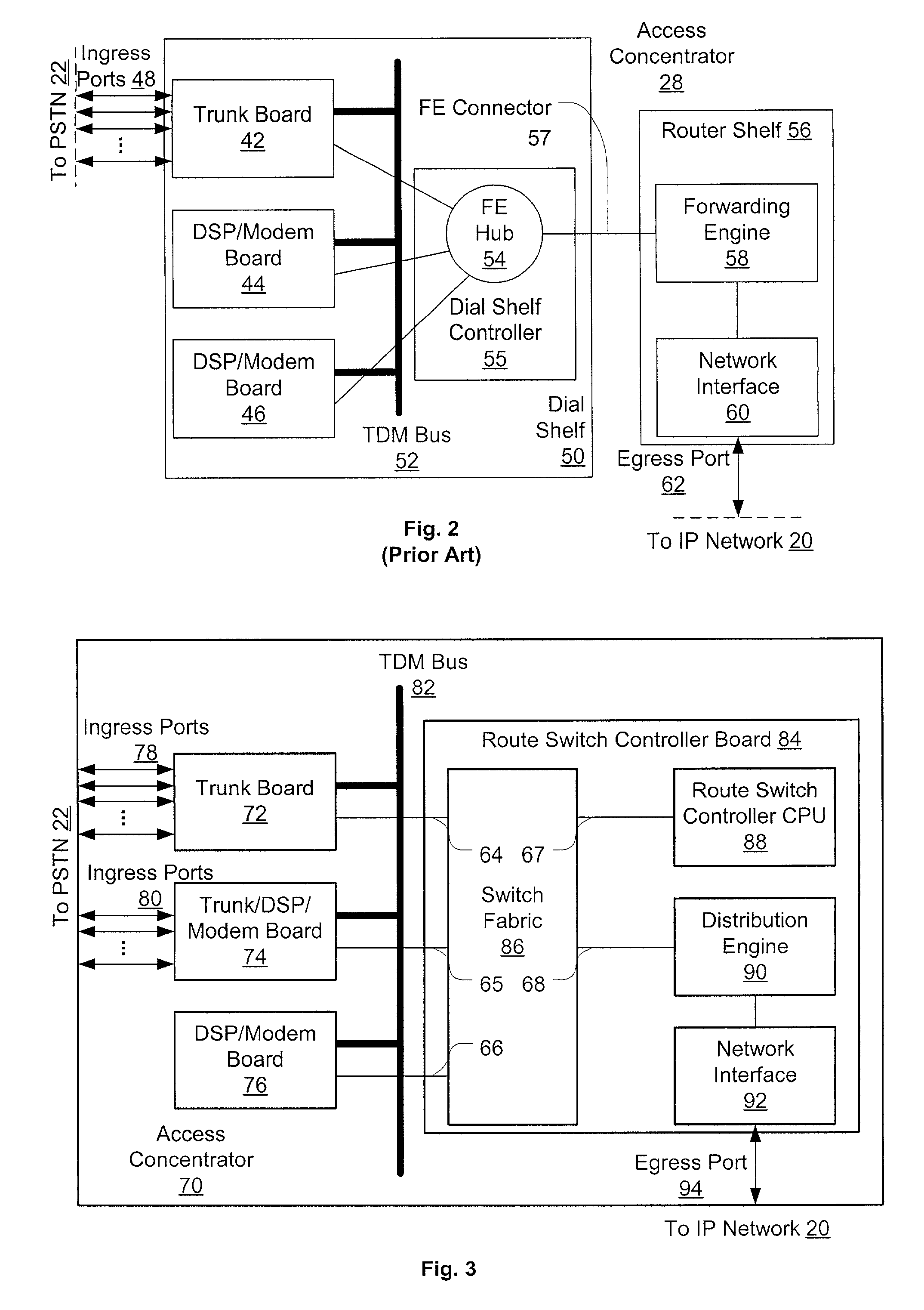Intraserver tag-switched distributed packet processing for network access servers
a network access server and tag-switched technology, applied in the field of packet data network access servers, can solve problems such as compromising the scalability of the architectur
- Summary
- Abstract
- Description
- Claims
- Application Information
AI Technical Summary
Benefits of technology
Problems solved by technology
Method used
Image
Examples
Embodiment Construction
[0027]Several embodiments are described below. These embodiments refer to several existing protocols, standards, and particular component devices useful in practicing the invention. These references are merely exemplary, as those of ordinary skill will appreciate that various alternatives and equivalents are available.
[0028]As an introduction, FIG. 1 illustrates a prior art deployment of network access servers. Access server 28 connects to PSTN 22 via one or more PSTN trunks 29, where each trunk is, e.g., a T1, T3, or E1 time-division-multiplexed (TDM) trunk, an ISDN Primary Rate Interface (PRI), or some equivalent. The access server users themselves (a computer user 21 and a telephone user 23 are shown) connect to PSTN 22, which provides physical connectivity to access server 28 via trunks 29. Depending on trunk capacity and utilization, each trunk will allow some number of additional users to reach IP network 20 through access server 28, for example, each added T1 connection allows u
PUM
 Login to view more
Login to view more Abstract
Description
Claims
Application Information
 Login to view more
Login to view more - R&D Engineer
- R&D Manager
- IP Professional
- Industry Leading Data Capabilities
- Powerful AI technology
- Patent DNA Extraction
Browse by: Latest US Patents, China's latest patents, Technical Efficacy Thesaurus, Application Domain, Technology Topic.
© 2024 PatSnap. All rights reserved.Legal|Privacy policy|Modern Slavery Act Transparency Statement|Sitemap



